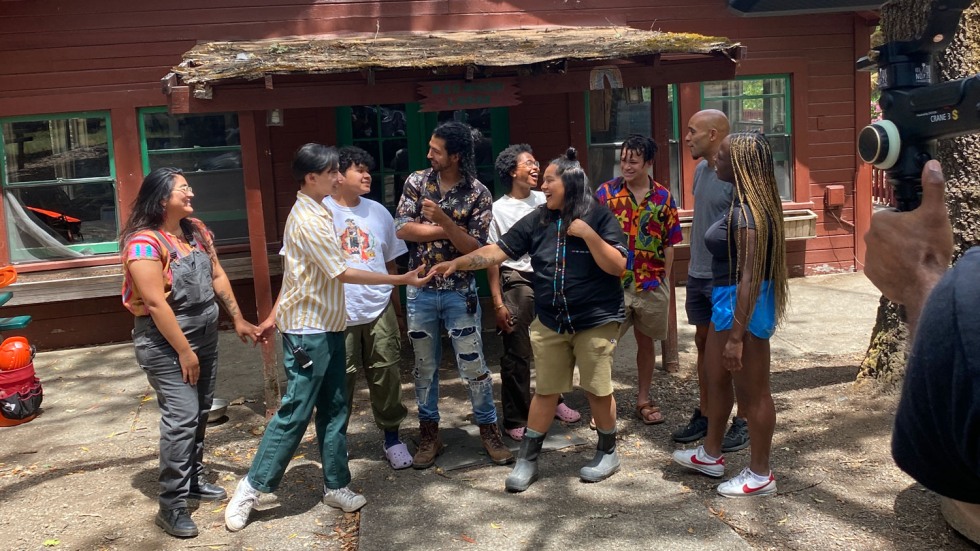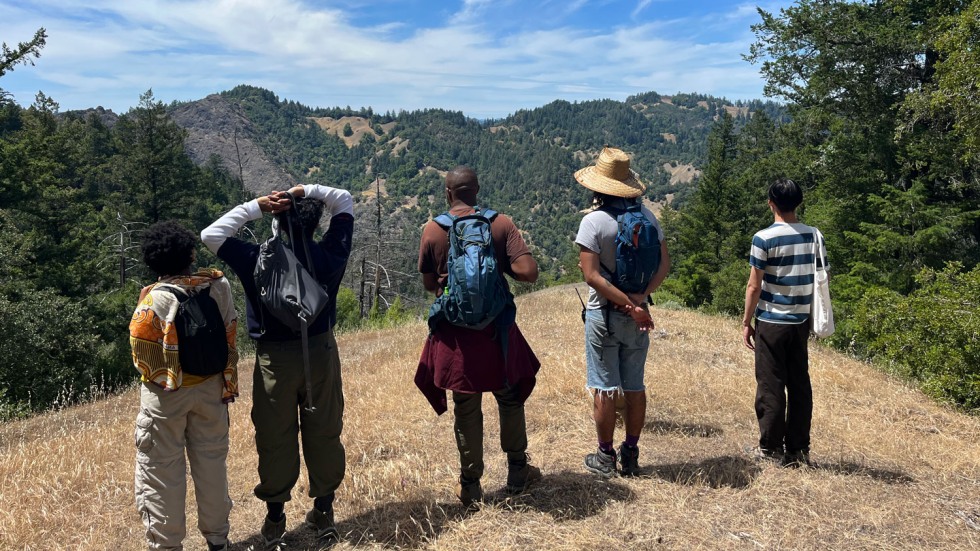PROVIDENCE, R.I. [Brown University] — Sometimes, Victor Beck’s identity feels like a heavy weight.
Beck, a rising junior at Brown University, is Native American and queer. On his home Navajo reservation in Piñon, Arizona, Beck said, many residents have limited access to medical care and mental health support and grapple with food insecurity. He often faces discrimination due to his sexual orientation, and he has watched many LGBTQ+ peers struggle with their mental health.
But in water, Beck feels weightless. He learned as much when, in June 2022, he traveled to a remote forest in Sonoma County, California, and floated in a peaceful creek, surrounded by other queer people of color.
“There’s so much weight and tension in our bodies as queer, brown and Black peoples,” Beck said. “Water takes away that weight. Being in community with each other takes away that weight, too. They are both healing elements.”
Nature, community and healing are the prominent themes of Beck’s summer. He is one of five Brown students who are completing a 10-week fellowship at the Shelterwood Collective, a new Black and Indigenous land stewardship organization that Beck says acts as water in a stream for queer people of color — lifting them up, offering them rest, and instilling in them a reverence for the natural world.
Co-founded in 2021 by a forester and climate activist duo, the Shelterwood Collective is dedicated to promoting sustainable land stewardship and land-based community building. On the collective’s 900-acre forest in Cazadero, California, volunteer workers, local community members, students and artists-in-residence — most of whom identify as queer people of color — work together to restore a parcel of land that has seen centuries of extractive cultivation and neglect. Drawing on land stewardship traditions from Indigenous peoples and the African diaspora, the collective is not only protecting the acreage from future droughts and wildfires but also promoting a new way of living with the land — one that protects people and non-human species alike.


